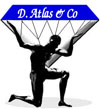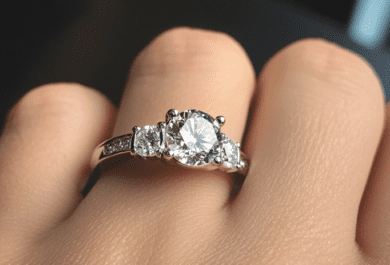The AGA-LBI and DFS System
With the advent of new technology which is capable of physically measuring light behavior in diamonds, AGA will now use the new AGA Durability-Finish-Size (DFS) system when we also utilize ImaGem light measurements. The original AGA Cut Class system was based on a conservative and traditional view of how diamonds are best cut, but with light detection devices, we are able to broadly open the field for new cut styles and innovation. The original AGA Cut Class system will continue to be used in our existing AGA-CERT® format. With new technology come changes in how diamonds can be assessed for quality. Both systems are useful, but we believe the AGA-DFS system is better overall in describing diamond cut quality with light performance.
We will introduce you here to the ImaGem terminology for grading Brilliancy, Sparkle and Intensity. Then we present the rules of how this will result in our AGA grading of Light, the Light Behavior Index (LBI) in a 0 through 5 scale.
Next we will introduce the AGA-DFS system. We use 6 categories, 0 to 5, as this seems sufficient to describe the parameters involved.
We will report AGA-LBI only, and we’ll also report AGA-LBI the AGA-DFS grade. Consumers and the trade will have the choice of having either report.
Rules of AGA Light Behavior Index (LBI) grading based on measurements obtained from ImaGem technology.
A top score is “0”……The lowest score is “5”
Brilliancy, Sparkle and Intensity are measured and reported individually, and are then combined under the formula below to create a single 0 to 5 LBI Grade.
ImaGem terminology
Brilliancy
Sparkle
Intensity |
“Excellent” |
“Very Good” |
“Good” |
“Good to Fair” |
“Fair” |
“Commercial” |
| AGA rules to convert to LBI score. |
1 V. Good allowed
2 Ex required |
1 Good allowed
2 Ex or Very Good required |
1 Fair allowed
1 Good allowed
1 Ex or V. Good required |
2 Fairs allowed
1 Ex to Good required |
3 Fairs |
1 or more graded as Commercial |
| AGA-LBI Overall Grade |
0
EX+ or EX |
1
VG+ or VG |
2
G |
3
GF |
4
F |
5
C |
“Overall” grades will be reported as letter abbreviations and as numbers from 0 through 5
EX+ is reserved for diamonds that score all three ImaGem measures in the “Excellent ” range.
VG+ is reserved for diamonds that score all three ImaGem measures in the “Very Good” range.
Below is a version of a graphical chart similar to what we will use on our AGA DIAMOND GRADING REPORT using ImaGem® technology:
Brilliancy, Sparkle and Intensity readings from ImaGem will be colored in and following the rules described in the above sections, a final, single number 0 to 5 will be assigned. The example given shows an AGA Ideal Grade of Light performance.
| ImaGem Grading |
Excellent |
Very Good |
Good |
Good – Fair |
Fair |
Commercial |
| Brilliancy |
xxxxxxxx |
|
|
|
|
|
| Sparkle |
|
xxxxxxxx |
|
|
|
|
| Intensity |
xxxxxxxx |
|
|
|
|
|
| Overall AGA Light Behavior Index Grade: |
|
| EX/0 |
|
/ |
|
1 |
|
/ |
|
2 |
|
/ |
|
3 |
|
/ |
|
4 |
|
/ |
|
5 |
|
AGA Durability-Finish-Size (DFS) standards
for use only with direct measurement of Light Behavior
technology from ImaGem., Inc.
Unlike other labs which plan to use predictive measurements of performance and therefore need more measurement parameters to base their findings, diamonds which are directly measured for light return need only a relatively simple system to ensure durability, proper finish and correct visual size to weight ratio. This is the AGA-DFS standard.
A diamond with “Excellent Light Behavior” via ImaGem, Inc. technology, will receive an AGA “0” grade.
When it also meets the top AGA-DFS standards it will be graded “EX+ 0/0” or “EX 0/0”
| Ideal Cut |
|
Near Ideal |
|
<– |
——————– |
to |
——————– |
–> |
|
Regular Cut |
|
Commercial Cut |
| 0 |
|
1 |
|
|
2 |
|
3 |
|
|
4 |
|
5 |
Total Depth %: Round diamonds:
Up to 63.0% scores 0 or lower
>63% to 65% scores 1 or lower
>65% to 67% scores 2 or lower
>67% to 69% scores 3 or lower
>69% to 71% scores 4 or lower
>71 scores 5
Total Depth %: Fancy Shaped Diamonds:
Up to 70% scores 0 or lower
>70% to 73% scores 1 or lower
>73% to 76% scores 2 or lower
>76% to 79% scores 3 or lower
>79% to 82% scores 4 or lower
>82% or more scores grade 5
All shapes including rounds:
Crown angle: Diamonds with all crown angles 30 degrees or greater may score 0 or lower.
Diamonds with all crown angles 29.5 degrees or greater may score 1 or lower.
Diamonds with any crown angles < 29.5 degrees to 29 degrees may score 2 or lower.
Diamonds with any crown angle < 29 degrees or less may score 3 or lower.
Girdle thickness: Diamonds with Thin to Slightly Thick score 0 or lower.
Diamonds with Very Thin score 1 or lower.
Diamonds with Thick score 2 or lower.
Diamonds with Very Thick score 3 or lower.
Diamonds with Extremely Thin, or Extremely Thick score 4 or lower.
Culet Size: Diamonds with None to Medium score 0 or lower.
Diamonds with greater than Medium (Large, Very Large, Extremely Large) score 2 or lower.
Finish: Diamonds must score “Excellent” to “Good” on Polish & Symmetry to score 0 or lower.
Diamonds which score “Fair” or “Poor” on polish and/or symmetry score 3 or lower.
Symmetry: With ImaGem, the grading of symmetry is becoming an automated function. Depending on the shape of the diamond, ImaGem will be programmed to measure the even curvature of marquise, oval, pear and heart shaped. It will measure the degree of parallel sides in square stones. It will assess the alignment of the table with the culet and girdle. It will also measure the regularity of the table shape and the placement of the culet. ImaGem will find bulging, asymmetry, and misalignments of faceting. Different programs will be utilized for the different diamond shapes and reported as ratios of perfection. 0 would be totally non-conforming and 1 would be absolutely perfectly symmetrical matching. A finely symmetric diamond will have all reported elements of symmetry numbers in the high 90’s meaning a 9/10 : 1 range of accuracy of symmetry. As time goes on, we will determine the degree of measured symmetry that corresponds to fine cutting. This is truly the cutting edge.
Light Behavior Performance is a separate component of overall AGA Cut Class grading. When Light Behavior Performance is combined with the five crucial physical measurements (depth %, crown angle, girdle thickness, culet size, and finish) our newly modified AGA Cut Class grade will be utilized. Without Light Behavior measurements, we will continue to utilize our Original AGA Cut Class grading system, which while much more traditional and far more conservative, remains a useful quality analysis tool when Light Behavior is not being measured.
by David S. Atlas, GG(GIA) Sr Mbr(NAJA) ASG(AGA)
datlas.com













